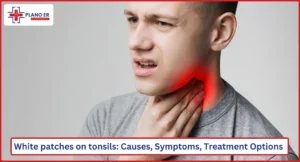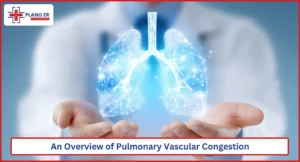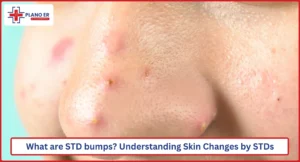Have you ever experienced difficulty while breathing and been uncertain about the situation? At times, this happens when the lungs contain too much air. This condition is called hyperinflated lungs, which leads to fatigue, shortness of breath, chest tightness, and more complicated issues such as pulmonary vascular congestion.
It is important to learn about hyperinflation of the lungs, as this condition is sometimes caused by chronic lung diseases. The airway inflammation can also be linked to peribronchial cuffing and peribronchial thickening. Depending upon the causes of hyperinflated lungs, appropriate treatment options are adopted.
Let’s explore more about hyperinflated lungs and learn about their early signs and root causes, along with the appropriate treatment options.
What are hyperinflated lungs?
Pulmonary hyperinflation is another name for hyperinflated lungs, a medical condition in which the lungs hold more air than usual. This problem occurs when the air gets trapped inside the lungs during exhalation, preventing the lungs from emptying.
Most people do not recognize hyperinflated lungs during the early stages or might be suffering from silent asthma without any obvious symptoms.
Is Hyperinflation of Lungs a Disease?
No, medically it is not a disease, but it is a warning sign of a hidden airway problem. It is not a standalone disease and does not damage the lungs, but it is caused by chronic lung problems that could be complicated.
Below is the list of common diseases that lead to hyperinflation of the lungs:
- Silent asthma or asthma
- peribronchial thickening
- pneumonia after surgery
- Lung damage due to smoking
- Chronic Obstructive Pulmonary Disease (COPD)
Can hyperinflated lungs kill you?
If you’re wondering whether “can hyperinflated lungs kill you?”, the right answer to it is that it does not directly cause any damage, but its underlying cause can cause serious damage or death. This condition can be caused by serious complications such as respiratory failure, which could be life-threatening.
If it causes chest tightness, over time, it can cause low oxygen levels and increase the strain on the heart. Conditions such as peribronchial cuffing or peribronchial thickening can increase the risk of sudden respiratory distress.
Such a condition should not be ignored, and the best practice is to diagnose it during the early stages and initiate quick treatment. If you or your loved one ever experiences shortness of breath, then immediately visit us at the Plano ER, where we have fully equipped laboratories and highly skilled staff to identify the problem and provide necessary emergency services quickly.
Hyperinflated Lung Symptoms
There are different signs of hyperinflation in the lungs, which differ depending on the underlying cause. The list below specifies a few of the common signs:
- Tightness in the chest
- Chest pain
- Fatigue
- Shortness of breath or difficulty breathing
- Chronic cough or dry cough with mucus
Hyperinflated lungs cause
This condition is caused when the air gets trapped in the lungs, preventing them from emptying, causing breathing problems. One of its most common reasons is Chronic Obstructive Pulmonary Disease (COPD). This can occur when bronchitis treatment is not completely done or when emphysema is included.
It can also occur due to inflammation in the chest or other changes, such as peribronchial cuffing or peribronchial thickening. Post-surgical complications, such as pneumonia after surgery, can also result in pulmonary hyperinflation.
At times, it also occurs due to a poor lifestyle or smoking, resulting in respiratory infections. Conditions like muscle strain in the chest or the costochondral area can also cause discomfort in the lungs, causing them to trap air.
Hyperinflated Lungs X-ray Findings
With the help of a digital X-ray of the chest, doctors can easily identify hyperinflation of the lungs. It instantly shows an abnormality in the chest or a sign of pulmonary hyperinflation. In most cases, to check if the lungs are hyperinflated, radiologists might witness widely spaced ribs, and the shadow of the heart might appear smaller.
While getting the X-rays done, the radiologists often check for conditions like peribronchial cuffing or peribronchial thickening. They might also look for conditions like pulmonary vascular congestion or some other underrated heart problem.
Although X-rays help identify the problem, doctors often take a CT scan along with an X-ray at times. This helps in immediately identifying the hyperinflated lungs so that conditions like chest tightness can be reduced.
Does hyperinflation of the lungs cause chest muscle pain?
Yes, lung hyperinflation can cause chest muscle pain and breathing problems. This causes constant strain on muscles that help in breathing, and over time, this persistent pain can cause muscle strain in the chest.
If you ever experience difficulty while breathing, then you should get yourself checked immediately, as early prevention can help you recover soon.
Hyperinflated Lungs Treatment
| Treatment Option | Best For | How it works? |
| Medication | It is preferred for peribronchial cuffing or peribronchial thickening. | Instantly relaxes the airway muscles. |
| Oxygen Therapy | Patients with pulmonary hyperinflation who have low oxygen levels. | Supplemental oxygen is given in case if the patients have low oxygen levels. |
| Surgery | In severe cases, the lungs need to be emptied immediately. | Volume reduction surgery takes place to immediately |
| Inflammation Treatment | pneumonia after surgery that causes hyperinflated lungs | With the help of pulmonary rehabilitation and nebulisers, the inflammation is controlled. |
| Lifestyle changes | Ideal to avoid hyperinflated lungs | Quit smoking and eating unhealthy food. |
Conclusion
Hyperinflated lungs itself is not a disease but a sign of a serious hidden issue that might be causing air trapping. It could be caused by COPD, airway inflammation, peribronchial thickening, and silent asthma. This condition might also arise due to some other complications, such as pneumonia after surgery.
With the help of early diagnosis, you can recover quickly and protect your lungs for the long term. There are different hyperinflated lung treatments available, and these different options can be implemented depending upon the cause and condition.
If you ever experience sudden breathing issues, then do not hesitate to contact us or visit us at the Plano ER for instant emergency services.
Frequently Asked Questions (FAQs)
How to reduce the chances of hyperinflation of the lungs?
It can be reduced through medication, inhaling, and exhaling exercises.
How many ribs are affected in hyperinflated lungs?
It depends upon the situation and cause, but most commonly, more than 6 anterior ribs are affected during hyperinflated lungs.
Should I worry about hyperinflated lungs?
Hyperinflated lungs themselves do not cause any harm, but the underlying reason can be harmful.
Is it possible to reverse hyperinflated lungs?
Yes, it is possible to hyperinflate the lungs through different procedures, such as surgery.








